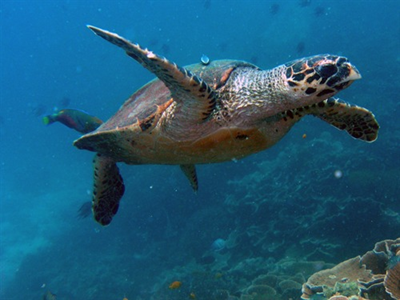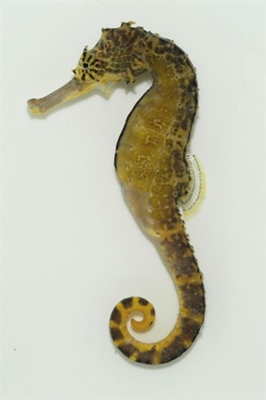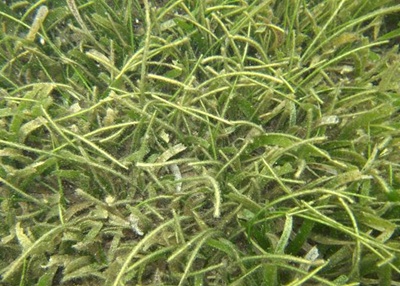Corralling Support For Our Reefs
In 2018, we celebrate the International Year of the Reef. This is a good occasion to learn more about coral reefs and other marine habitats, such as mangroves and seagrass meadows, and the need to conserve them.
Among other things, these habitats protect the coast and humans rely on their rich biodiversity for food.
However, issues such as global warming, pollution and land reclamation have put these habitats and their biodiversity at risk. Thankfully, Singapore’s waters still support a surprising amount of marine wildlife.
Below are some beautiful examples.
1. Hawksbill Sea Turtle
It earns its name from its protruding upper jaw, which gives its mouth a beak-like shape. Critically endangered, it has been affected by sea pollution and the loss of nesting beaches to reclamation and other land uses. Many have died after being caught in discarded fishing nets. They are also poached for their attractive shells.

Hawksbill Sea Turtle. Photo credit: Karenne Tun
Species: Eretmochelys Imbricata
Where it lives: Shallow coral reefs along the Singapore Straits.
Trivia: Despite Singapore’s highly urban environment, the turtles have been returning to our sandy shores to lay their eggs. Since last August, they have hatched at East Coast Park twice and at a Sentosa beach once. Females can lay up to 200 eggs each time. Besides the Hawksbill Sea Turtle, the Green Turtle (Chelonia mydas) has also been visiting our shores.
2. Seahorses
They are actually fish, but swim upright and spend most of their time anchored to one spot, feeding on minute zooplankton. Instead of scales, they have an armour of bony plates just under their skin. They are globally vulnerable, as they are collected and sold for use in traditional Chinese medicine or as aquarium pets.

Tiger Tail Seahorse (Hippocampus comes). Photo credit: Tan Heok Hui
Species: Hippocampus spp.
Where they live: Southern islands. They generally require calm, shallow waters with many hiding places, such as seagrass meadows.
Trivia: The males have a special pouch on their abdomen into which the females deposit their eggs. The eggs are fertilised in the pouch and when the young are hatched, the “pregnant” father keeps them in the pouch till he goes “into labour” and ejects them.
3. Dragonfish Sea Cucumber
Approach this marine creature with care. It has an ingenious, if disconcerting, way of distracting its predators: It sacrifices a body part, in this case, a part of its skin.
Species: Stichopus horrens
Where it lives: Pulau Semakau, Sisters’ Islands Marine Park
Trivia: When left out of water for too long, it “melts” and might even disintegrate completely. But if it is returned to water in time, it becomes whole again.
4. Blacktip Reef Shark
This shark is easy to spot. Just look out for the black tips on its fins. It faces threats from overfishing by recreational fishermen and being trapped in discarded fishing nets.
.jpg?h=200&w=400)
Blacktip Reef Shark. Photo credit: Derek Keats
Species: Carcharhinus melanopterus
Where it lives: Sisters’ Islands Marine Park, submerged reefs at low tide in southern islands.
Trivia: It can grow up to 1.8 m long and hunts in shallow waters around coral reefs, feeding on marine creatures like fish, octopuses, squid and crabs.
5. Seagrasses
If you happen to stumble on a lush field of seagrass, it means you are on a healthy seashore. Seagrasses sustain a myraid of marine life, from tiny creatures such as crabs and prawns to larger animals like turtles and dugongs.They are not algae or seaweed, but flowering plants that have adapted to grow submerged in the sea.

Sickle Seagrass (Thalassia hemprichii) Noodle Seagrass (Syringodium isoetifolium). Photo credit: Jeffery Low
Family: Cymodoceaceae or Hydrocharitaceae
Where to find: Labrador Nature Reserve, Chek Jawa Wetlands, Cyrene Reef, Pulau Semakau, and certain stretches of Pasir Ris Park and Changi Beach.
Trivia: The 12 seagrass species in Singapore make up more than half the total number recorded in the Indo-Pacific region.
6. Pink dolphin
Pink dolphins or the Indo-Pacific Humpbacked dolphins are the most commonly seen dolphin species in Singapore waters. They are dark grey as babies but as they mature, their colour changes and the hump on the back becomes more obvious.
Species: Sousa chinensis
Where they live: The waters surrounding the southern islands
Trivia: Singapore has two other wild dolphin species – the Indo-Pacific Bottlenose Dolphin (Tursiops aduncus) and Irrawaddy Dolphin (Orcaella brevirostris). Seeing dolphins in the wild is a good sign as it means the marine environment is healthy and able to provide enough fish for the dolphins to eat.
Visit www.nparks.gov.sg/iyor to learn more about the International Year of the Reef and the activities you can participate in.
Text by Lea Wee





Have views or comments on this article? Let us know via this form. If you would like to give us feedback on any other areas relating to our parks and gardens, please submit via https://www.nparks.gov.sg/feedback